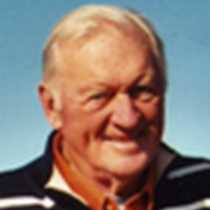Astoria, Oregon
Early this morning the captain maintained a course toward the fabled Columbia River bar. Staff then described to guests the sometimes furious and always dangerous opening to the Pacific Ocean (William Clark, annoyed by the crashing waves, called it the “Western Sea.”) After returning to the Astoria waterfront the National Geographic Sea Bird tied up next to the world-class Columbia River Maritime Museum.
After touring the museum guests boarded motor coaches to Fort Clatsop. Meriwether Lewis and William Clark managed to hold the Corps together at this historic site over three rainy winter months, 1805-1806. The major dividend of their extended visit was writing the journals, including (mostly) Clark’s accurate and detailed maps. While the men shot elk, collected salt, repaired their deteriorating buckskin clothing, and made over 300 pair of moccasins, dreams of returning to the “United States” filled their time. Fort Clatsop rangers, LEX staff and a first-class on-site bookstore filled in gaps regarding the Corps of Discovery historic presence. Motor coach narration by staff included references to Oregon’s nearby waterways, elk herds, lush forests and fields, and nearby Fort Stevens which was constructed in 1863 on orders from President Abraham Lincoln. (Stevens was upgraded during the First and Second World War, and was randomly fired upon by a Japanese submarine in 1942.)
The morning tour ended up Astoria’s 600-foot high Coxcomb Hill. Although the Astor column was closed for repairs (164 steps), guests gazed up and down the Washington and Oregon coasts and across the Columbia River estuary and white-capped bar. Cape Disappointment, the rocky headland on the Washington side, and Point Adams on the Oregon coast, dramatically mark the western limits of this wide, relentlessly-moving waterway.
Light rain and Columbia River winds did not deter guests from exploring the Lewis & Clark interpretive center and architect Maya Lin’s Confluence Project at Cape Disappointment. An added attraction was a view of the Columbia bar’s wild waters far below the rocky Cape Disappointment headland.
Captain’s dinner, more references to the intrepid captains and their team, and a brief staff recap brought this week’s “In the Wake of Lewis & Clark” to a close.
Early this morning the captain maintained a course toward the fabled Columbia River bar. Staff then described to guests the sometimes furious and always dangerous opening to the Pacific Ocean (William Clark, annoyed by the crashing waves, called it the “Western Sea.”) After returning to the Astoria waterfront the National Geographic Sea Bird tied up next to the world-class Columbia River Maritime Museum.
After touring the museum guests boarded motor coaches to Fort Clatsop. Meriwether Lewis and William Clark managed to hold the Corps together at this historic site over three rainy winter months, 1805-1806. The major dividend of their extended visit was writing the journals, including (mostly) Clark’s accurate and detailed maps. While the men shot elk, collected salt, repaired their deteriorating buckskin clothing, and made over 300 pair of moccasins, dreams of returning to the “United States” filled their time. Fort Clatsop rangers, LEX staff and a first-class on-site bookstore filled in gaps regarding the Corps of Discovery historic presence. Motor coach narration by staff included references to Oregon’s nearby waterways, elk herds, lush forests and fields, and nearby Fort Stevens which was constructed in 1863 on orders from President Abraham Lincoln. (Stevens was upgraded during the First and Second World War, and was randomly fired upon by a Japanese submarine in 1942.)
The morning tour ended up Astoria’s 600-foot high Coxcomb Hill. Although the Astor column was closed for repairs (164 steps), guests gazed up and down the Washington and Oregon coasts and across the Columbia River estuary and white-capped bar. Cape Disappointment, the rocky headland on the Washington side, and Point Adams on the Oregon coast, dramatically mark the western limits of this wide, relentlessly-moving waterway.
Light rain and Columbia River winds did not deter guests from exploring the Lewis & Clark interpretive center and architect Maya Lin’s Confluence Project at Cape Disappointment. An added attraction was a view of the Columbia bar’s wild waters far below the rocky Cape Disappointment headland.
Captain’s dinner, more references to the intrepid captains and their team, and a brief staff recap brought this week’s “In the Wake of Lewis & Clark” to a close.



